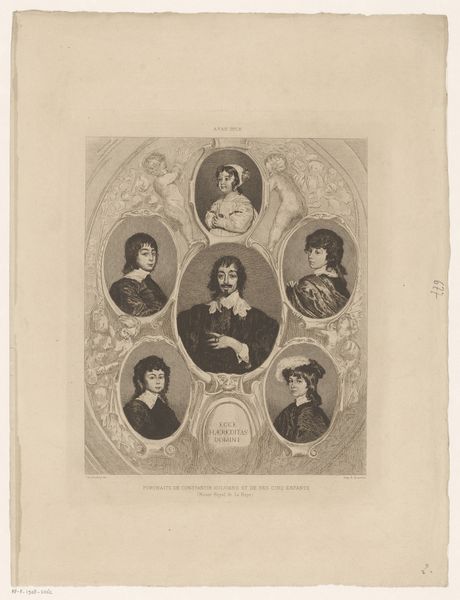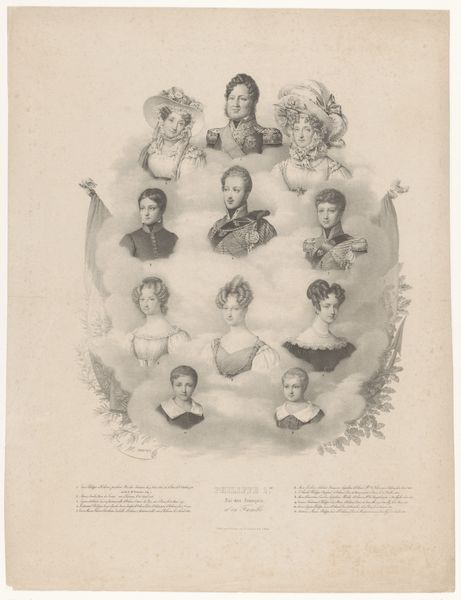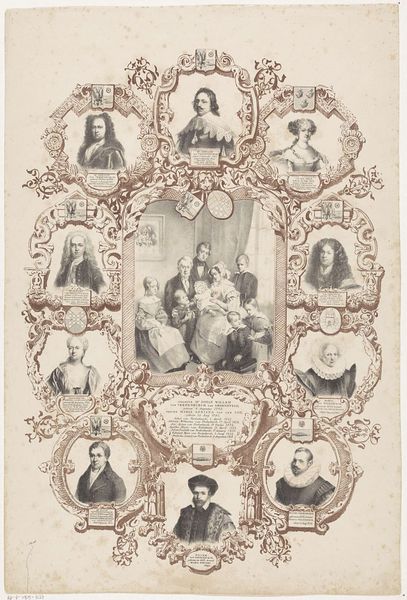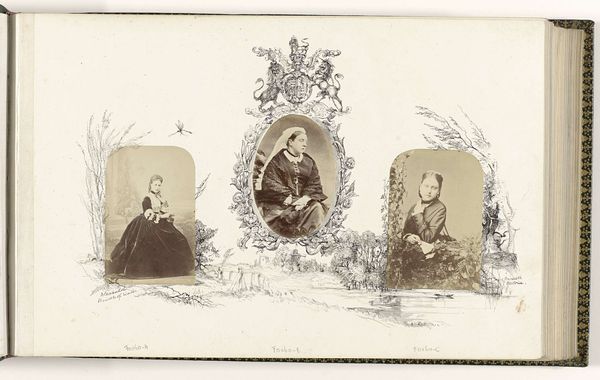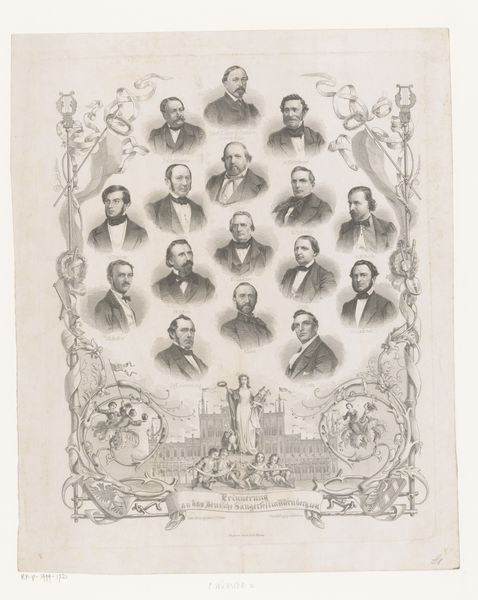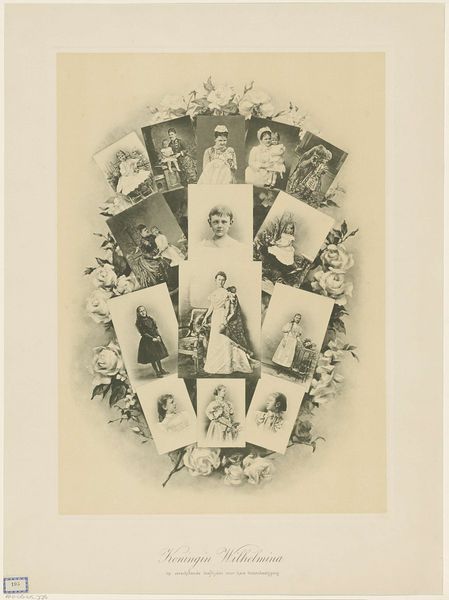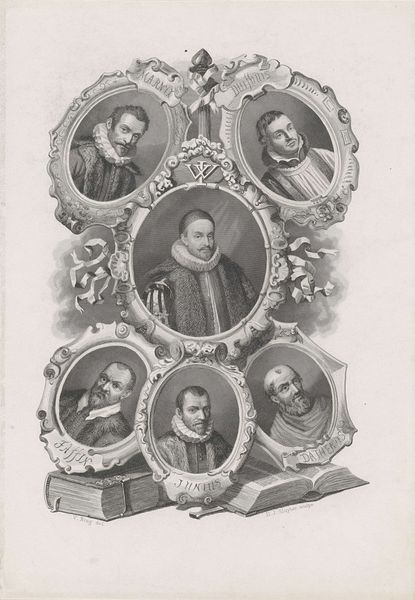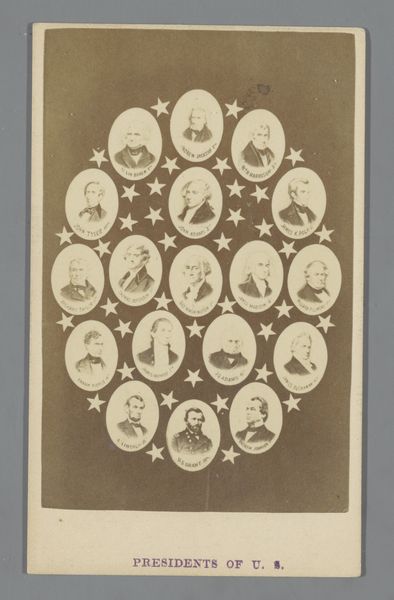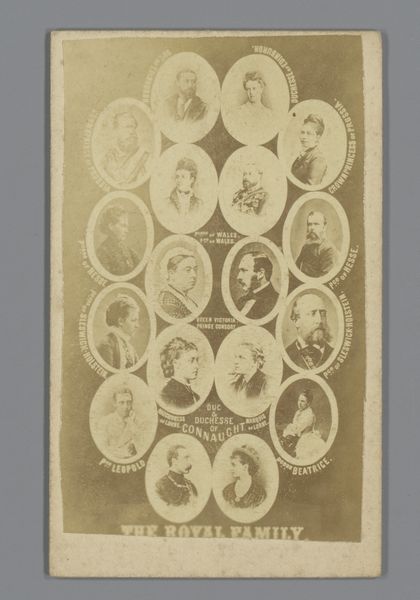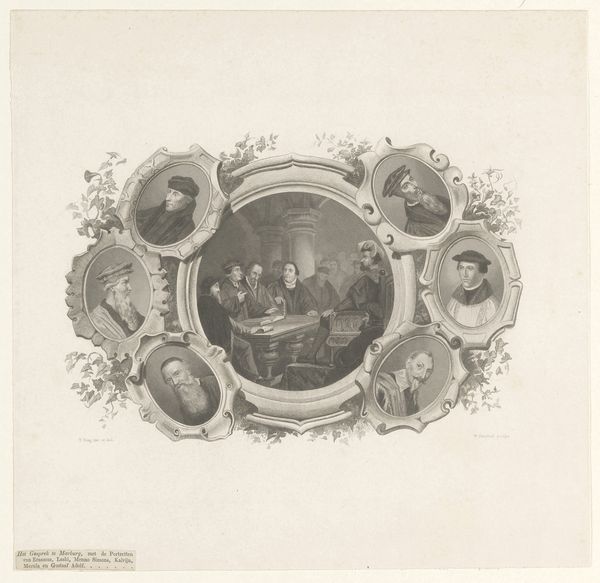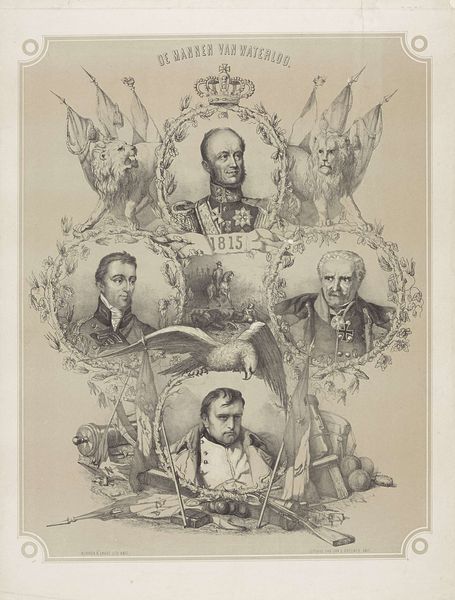
Portretten van Willem II, koning der Nederlanden, Anna Paulowna Romanowa en hun kinderen 1830 - 1899
0:00
0:00
Dimensions: height 246 mm, width 172 mm
Copyright: Rijks Museum: Open Domain
Curator: This print, dating from somewhere between 1830 and 1899, now resides in the Rijksmuseum. It’s a group portrait identified as depicting Willem II, king of the Netherlands, Anna Paulowna Romanowa, and their children. It’s attributed to an anonymous artist and produced via engraving. Editor: Ah, an oldie but goodie! It feels almost like peering through a frosted window at a royal dollhouse. There's a dreamy quality despite the very official subject matter. Curator: Indeed, and examining this artwork through an intersectional lens invites considerations around the performative aspects of royal identity. How is power visually constructed, and what societal expectations regarding gender roles are being reinforced or, potentially, subverted here? Editor: Ooh, good point! It’s the swirling baroque framing. Like the family's afloat in a cloud of lace and expectations. The serious expressions versus the overall sweetness is throwing me. Are those chubby cherubs trumpeting their arrival into high society? It's a bit much! Curator: I agree that there's a saccharine quality. The composition reflects the Romanticist tendencies toward emotional idealization. Consider also, however, that representation played a critical role in solidifying dynastic legitimacy and cultivating popular support for the monarchy during this period. The domestic ideal of the royal family becomes a powerful symbol of national stability. Editor: So, like, early royal family influencers? Building a brand through baby photos and strategically placed cherubs? Genius. Makes you wonder what the Romanows would be posting on Instagram today! But honestly, seeing all this history rendered in this medium gives it all another flavor of unreality. Curator: Precisely. It’s about unpacking the layers of meaning encoded within seemingly straightforward images, challenging assumptions about representation, and understanding how art actively participates in constructing broader socio-political narratives. Editor: And it’s a great reminder that even old royal portraits have their stories to tell. Gives you something to ponder next time you are scrolling the ‘gram. Curator: It invites, even demands, we scrutinize who is in the frame, and whose story isn't being told, really.
Comments
No comments
Be the first to comment and join the conversation on the ultimate creative platform.
